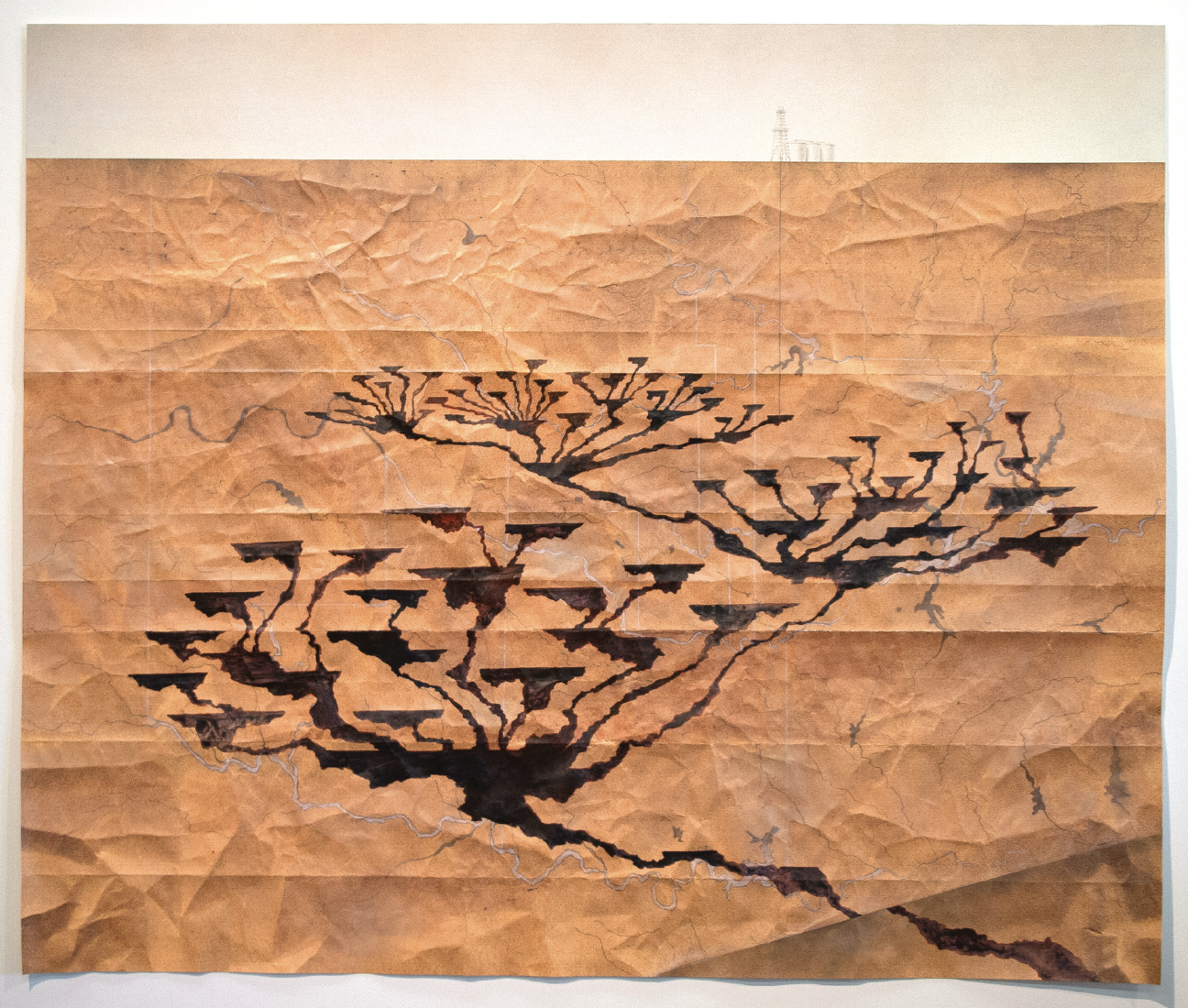Chris Sauter:
Family Oil Deposits: West Anderson Family, 2020
mixed media on paper
courtesy of the artist
resources:
artist site
“Chris Sauter’s Scholastic Installations,” David S. Rubin, Glasstire
“Artist Chris Sauter Talks Curators, Coming Out and Playing with Stereotypes,” Dan R. Goddard, Out In SA

In our deeply divisive current political and social moment, a monolithic view of rural America (as white, Christian, conservative) has been utilized by opposing sides of ideological debates, a strategy that fundamentally misrepresents the more complex exchange of ideas, and unexpected relationships, present in the life of these communities. In an era such as this, the work of artists such as CHRIS SAUTER becomes even more necessary.
Raised on his grandparent’s ranch outside Boerne, Texas, the San Antonio-based Sauter often communicates complex understandings of his home region, and his identity within physical and philosophical terrain. Across a diverse body of work, Sauter examines the assumed binary relationships within our attitudes toward entities such as religion and science, biology and culture, aiming to create moments when such dichotomies are “collapsed into multifaceted wholes.”
A continuous thread across many of these investigations has been an awareness of the gallery space itself – as both an agent that can either challenge or reinforce such dichotomies, but also as a physical material through which to shape more intimate explorations of these concepts. In this case, Sauter has taken to cutting out gallery walls, and deploying their raw material as a resource through which to create installations. This process began early in Sauter’s career, in the Graft installation at ArtPace in San Antonio, where through cutting out pieces of the gallery’s drywall, he meticulously rebuilt the furniture, objects, and spatial dimensions of the dining room in his childhood home in Boerne.
In the recent Family Oil Deposits, West/Anderson Family, Sauter again considers how generational bonds shape understandings of place and cultural history, in this instance representing the family tree of his colleague Joe Harjo (whose Indian Holding a Weapon series is also present in this exhibition). In presenting this genealogy as geologic formations overlaid upon a map of Oklahoma river systems and an Indian Territory map, Family Oil Deposits urges that we consider the forced migration of Native peoples, the persistence of extraction industries in these regions, and local, lived experiences as interwoven states that are often shaped by hands of an economic, colonial logic.
Chris Sauter’s work has been exhibited widely across the United States and Europe, in a range of settings ranging from the Kohler Art Center to MoMA PS1. Sauter has been a resident artist at the Künstlerhaus Bethanien, Berlin and Artpace, San Antonio. He is the Interim Chair of Painting and Drawing and the Director of Foundations at the Southwest School of Art, and a member of M12 Studio.
︎︎︎return to exhibition artists
︎︎︎further information at Plains Art Museum